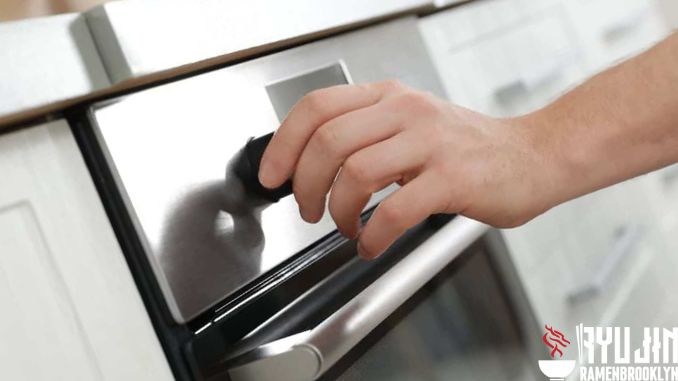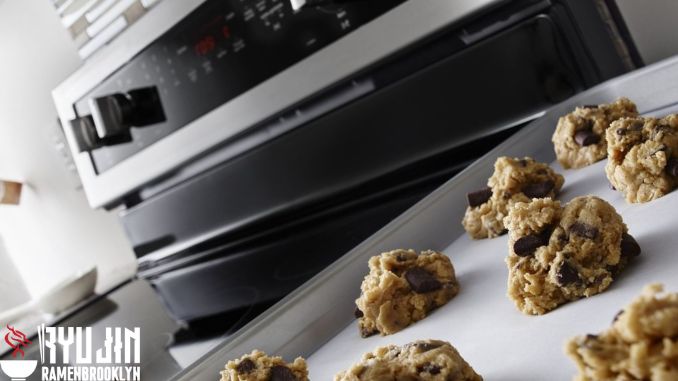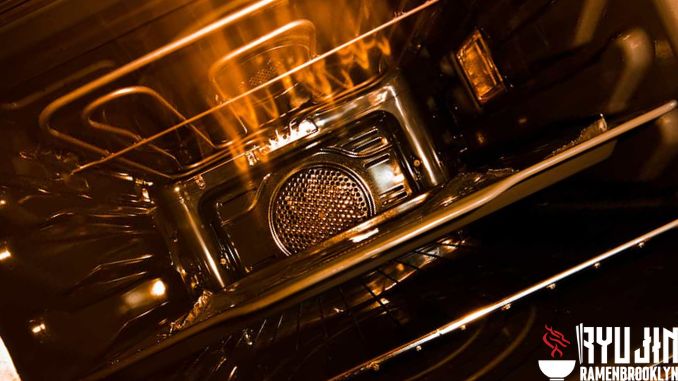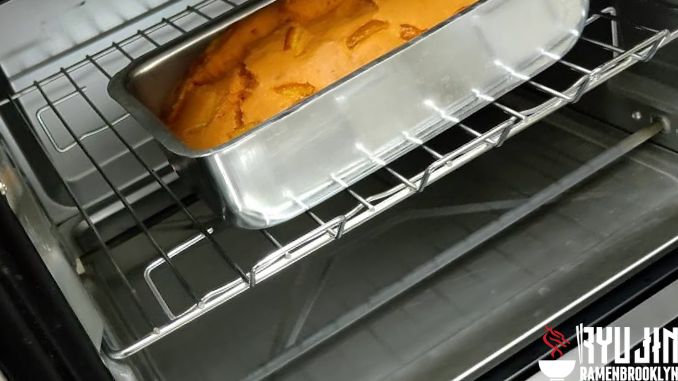How to Preheat Oven
The oven is one of the most important appliances in any kitchen. It’s used for everything from baking to roasting to reheating food. But how do you know when your oven is preheated? And how do you make sure your food cooks evenly in the oven?
Cooking can be daunting, but it doesn’t have to be. This week, we’ll show you how to preheat oven safely and effectively. Many mistakes are heating their oven too high when they first turn it on, leading to an ineffective cooking process and potentially hazardous conditions. Preheating your oven is important in ensuring your food cooks evenly and properly. Depending on what you are cooking, the time you need to preheat your oven may vary.
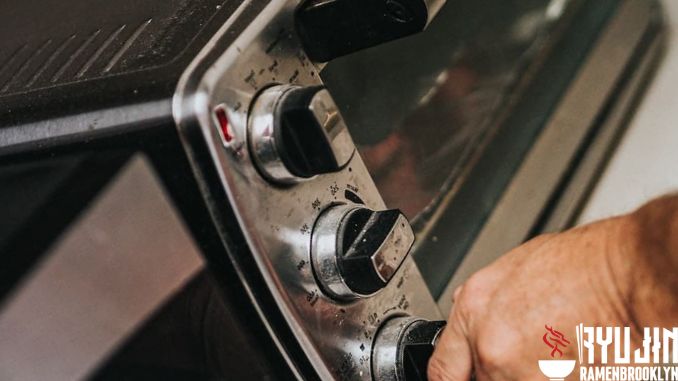
Preheating the oven is one of those things we’d all love to skip, but it isn’t that simple. When you don’t preheat your kitchen appliance properly, there’s a higher chance of uneven cooking, leading to dry foods or undercooked meats! So make sure not only do I tell about how important this step was in making great tasting meals -I’m also going show what happens if the approach does.
Suppose you’ve got an oven that alerts when it’s finished preheating; lucky, oh so very much. For the rest of us, though… it’s a little bit more guesswork and checking than most would like – but don’t worry! We’re here with answers for every situation (even if your thermometer isn’t yet installed).
This blog post will discuss how to preheat your oven so that your food comes out perfectly every time. We’ve got the answers to whether you’re looking for a gas or electric oven. We also detail how long it should take and what other features are available in each type of model so that your search is easier than ever before!
We will also provide tips on troubleshooting common problems that may occur while preheating your oven. So, whether you are a novice cook or an experienced chef, read on for all you need to know about preheating your oven!
What is the Point of Preheating an Oven Before Cooking Food?
When baking, your oven must be heated to the proper temperature before cooking. This way, there won’t be delays due to preheating and waiting for an unevenly cooked product! It only takes a few seconds for an electric heating element or gas pilot light. Still, it can take several minutes when using natural convection heat from the stovetop because of how slowly these types work! So always turn on any type before starting cooking so as not to have anything fall victim to slow warming rates!
Heating an oven is no easy task, but it’s worth the wait! Most recipes will tell you that they need to be heated before cooking anything in them. This can take anywhere from 3-10 minutes depending on how hot your personal preferences want things cooked or if other items are being cooked at once (like pizza!).
Preheating your oven is important for two main reasons:
- To ensure that your food cooks evenly. When you put raw ingredients in an unheated space, such as a cold stovetop or poorly adjusted temperatures on either end of the equation (stovetop vs microwave), then there will be areas that have less heat energy available for circulation than others – this can lead not only towards unevenly cooked dishes but also potential hazards like undercooked meats and dry overcooked ones!
- To help the cooking process along. Many recipes call for a hot setting because it helps certain foods rise properly and be denser if they’re going into an already risen dough like bread or cake batter before being baked at higher temperatures than what would otherwise occur naturally with just room temperature surroundings. For example, Pizza crust needs heat from below as well since pizzas sit on top of them while cooking, which causes these toppings eventually seep through any holes and cook unevenly if not preheated!
See more: How Do Self-Cleaning Ovens Work?
Some Things to Keep in Mind When Preheating The Oven
There are a few things to keep in mind when preheating your oven. First, ensure you haven’t left anything inside before turning on the power and setting it for whatever time or temperature level works best with what’s currently needed! Then just wait 10-15 minutes so that all appliances have had enough head start towards getting up right fast again after being turned off or unplugged.
If there’s food inside, be sure it can withstand high heat, such as pizzas or cookies that are already cooked, before adding them in so as not to overcook anything else being put together at the same time! And always use oven-safe cookware when possible – this will help prevent any shattering or other problems from happening due to differential heating rates.
If you want to keep things simple, use an oven thermometer. They come in handy when trying to maintain consistent temperatures throughout the cooking process and for preheating purposes! Just place it in the center of the oven on a baking sheet and wait until the indicator reads close enough before starting to cook anything. This will help save energy by not having to run longer than necessary.
Some people might forget that their oven has been preheating, especially if they’re in another part of the house or focusing on something else entirely. To avoid any potential hazards, set a timer for yourself to know when it’s time to start cooking!
You can also use the stovetop as an alternative method for preheating the oven, though this requires more attention and time. Instead, place a pot or pan on the burner set to high heat until the desired temperature is reached, then put whatever you’re cooking in afterward. This is great when needing something like a quick sear on meat before roasting it whole later!
Ventilation is one of the most important things to remember when preheating your gas oven. Make sure you open a window and don’t block any doors or vents before setting up shop on a cooking day because gas-powered appliances release carbon dioxide as their fuel source—which can cause an unpleasant odor if left unchecked! Be very careful with how much food goes onto plates near these devices, too – just one slab more could set off loud alarms all over town.
With these tips in mind, you should be well on your way to preheating ovens like a pro! However, remember that each situation is different, so always use common sense and take all necessary precautions before starting anything. And, of course, have fun in the kitchen!
See more: Can You Put Aluminum Foil in The Oven?
How to Preheat Oven
Preheating an Electric Oven
- Consider preheating your oven before starting your recipe.
It’s a good idea to preheat your oven before you start cooking so that when it is time for the dish, your hard work will be rewarded with perfectly cooked food! Unfortunately, many electric stoves require 10-15 minutes at least. This may seem like quite some wait, but in reality, we’re only working half our day away because by then, having started preparation on top usually has been completed, and there isn’t as much left over from one step then would otherwise occur if everyone worked simultaneously (and thus wasted less).
- Open the oven to make sure everything has been removed.
The best way to preheat your electric oven is by opening it up and ensuring that all cooking utensils have been removed from the inside. If you’re going for a baking session, remove any trays or other items before starting so as not to damage anything!
- Rearrange the rack levels, if necessary.
Most oven racks are set in the middle of your appliance. Still, sometimes you will need to place something higher or lower depending on what dish is being cooked for during baking time- this may require removing one from its usual position so it can be adjusted accordingly with narrow ledges inside each side where these accessories sit against when not used as supports under pots/pans placed onto them while cooking food items.
If you’re making lasagna or casserole dishes that are situated near top-heating elements like broilers and grills then place them on this shelf so they can get browned nicely while still being protected from hot spots beneath which could cause burning if used without protection during the baking time!
Place items like cakes or cookies in the middle rack unless otherwise specified by recipe; these will be closer to where you want them browned-up crispiness once their time comes around!
For foods such as flatbreads and pizzas – placed towards the bottom of the rack–it’s best not to be too concerned with getting crispy at all since we’ll be adding sauce which will moisten it up later anyway, so the focus here would be more so on how evenly cooked through it becomes without overdoing one part while leaving another doughy.
- Place an oven thermometer on the center rack.
There are a few ways to know if your oven is running too hot. One way would be checking with an actual thermometer inside the kitchen, not just relying on what feels like warm air coming out from somewhere nearby or being told by sight alone that it’s time for another pizza!
This is an important step for two reasons: first, you want to ensure that your oven is preheating to the correct temperature. Second, you want to leave the oven thermometer in the oven while it’s preheating so that it can acclimate to the heat. If you don’t have an oven thermometer, you can usually find them at your local grocery store near the baking supplies.
- Preheat your oven according to your recipe instructions.
Now that you have your oven thermometer, it’s time to preheat the oven. To preheat your oven, turn it on and set the temperature. Then refer to your recipe for guidance on how much time you need at that particular setting to get accurate temperatures throughout all of its surfaces. As a general rule of thumb, most recipes will call for an oven to be preheated to 350 degrees Fahrenheit. However, some recipes may call for a higher or lower temperature, so checking before proceeding is important.
Once it’s ready, make sure not to touch anything else but keep an eye out because there may still be hot spots or metal utensils left from previous cooking sessions!
- Wait until the oven is fully preheated before starting your dish.
Once your oven has reached the correct temperature, it’s important to wait until it is fully preheated before starting your dish. This usually takes 10-15 minutes. Once the desired temperature has been reached, a timer will usually start and beep to let you know it is time to start cooking. If your oven does not have a timer, you can set one yourself.
Most modern models have a dial or light indicator, which will turn blue when ready and indicate how hot they need to be in order not to melt any pots/pan items placed inside them while heating food, etcetera!
If you have an older model without a dial with different temperatures written on it or if there’s only one setting for when the hottest/coldest is available, simply wait 10-15 minutes before placing things into the baking dish and expecting them to come out cooked as desired!
- Start cooking!
Now that your oven is ready, it’s time to start cooking. Refer to your recipe for guidance on how long to cook your dish. You may need to adjust the cooking time or temperature depending on what you’re making. For example, if you’re making a dish that requires a longer cook time, you may need to lower the temperature so that the food doesn’t burn.
Place your food inside the oven and let it bake according to the recipe. Make sure the door is firmly closed unless specified otherwise; do not peek inside while baking, as opening/closing may cause internal heat escape, resulting in longer cooking times than expected!
If you plan on doing a lot of baking and using multiple racks, consider staggering the dishes so that they are not parallel. This will allow hot air inside the oven to circulate food, better-distributing heat more evenly without sacrificing any space between pans or shelves for catching drips from escaping juices!
- When cooking, turn off the oven and let the dish cool before serving.
Once your dish is done cooking, it’s important to turn off the oven and let the food cool before serving. Depending on what you’ve made, the cooling process can take anywhere from a few minutes to an hour. Once the dish has cooled, you can serve it as is or store it in the fridge for later.
Baked goods such as pies or cakes will generally need to be cooled completely before being served, as they can continue to cook even after being removed from the oven. Dishes like casseroles or lasagna can usually be served immediately after cooking but may benefit from a brief cooling period to allow the flavors to meld together.
Preheating a Gas Oven
- Be sure to have proper ventilation.
When cooking with gas ovens, make sure you have proper ventilation. The fumes from these appliances can be more than other types and will likely cause a problem if they aren’t filtered out properly by an open window or door unit while seeping into your home’s carpets through its flooring below ground level as well!
- Open the oven, then make sure there is nothing inside.
Before you can bake your favorite cookies, nothing must be inside the oven. If storing baking tins in this location will require pulling them out and setting them aside for safekeeping
- Adjust the racks, if necessary.
You must adjust your oven racks to get the evenest baking possible. Some recipes will require moving them around in there, and depending on what type of bread or pastry is being cooked, this can make all difference! Refer to a recipe for instructions about adjusting these properly- just pull out each rack until they’re ready solid again, then reinsert them into their designated spots.
- Determine whether your oven ignites with a pilot or electrically.
The type of ignition your oven has will determine how you turn it on and set the temperature. Most older stoves use a pilot light, while newer ones rely heavily upon electricity to ignite. Here’s everything that is involved in deciding what sort:
– Pilot light: You may have noticed that your oven has a constantly burning flame, and this is because it uses the pilot-based ignition. The size of the flame will change depending on what temperature you’re cooking at – so if yours seems too big when baking bread at 400 degrees Fahrenheit (200 Celsius), there could be an issue with how well-calibrated your stove is.
– Electric: This ignition is often found in newer homes and apartments, as it’s much less dangerous than pilot lights. The flame on an electric oven is invisible until you turn it on and set the temperature. To set up an electric oven, you must press the power button and then use the temperature knob to choose how high or low you want it. These models usually have a self-cleaning feature too!
- If the oven uses a pilot light, turn the oven on and set the temperature.
Turn on the oven and set its temperature to whatever you desire. You may need to press down lightly before turning; remember that some pilot lights require more force than others! Also, the gas mark on your oven may differ from Celsius or Fahrenheit, so you will need to convert it using an online tool.
When the pilot light goes out or needs to be ignited before each use, make sure that you set your temperature dials on “off” and locate it in an area where there are no open flames. Once lit hold a match next to any exposed flame (don’t forget about safety!) If this helps but doesn’t work- turn it up slightly till you finally get the output needed!
- If the oven is digital, press broil or bake on the keypad and set the temperature.
Suppose your oven is digital; press broils or bake on the keypad and set the temperature. Use up/down arrows to adjust the heat until you reach the original setting; once set, hit “start” – there will be numbers displayed that change with each new level reached in the cooking process (this means progress!). Wait patiently while the unit rises evenly through stages before removing it from the venting area when cooked thoroughly at desired high temperatures!
- Place food in the oven and bake according to recipe instructions.
When the oven reaches a consistent temperature, place food inside. Gas ovens are important because they heat up much faster than electric ones. This means that you will need less time to preheat them before preparing your dish or meal. 5-10 minutes worth of cooking time should be enough!
To get the best results from your baking, you must follow these simple rules. First and foremost: “Do not open oven door until recipe tells.” This will help keep heat inside longer, so no surprises!
If planning on both racks, set items gently onto the lower shelf rather than putting too many dishes into the middle section where they can’t reach them all at once – this may prevent the upper part from getting sufficiently hot before the end result.
- Use caution if you smell gas.
If you smell gas while baking, there could be a leak. Turn off your oven immediately, and don’t use any electrical appliances like drills or saws because they’ll cause an explosion! Open up one of these windows for ventilation before calling emergency services so that everyone in the house can also access fresh air, including pets, if necessary (but let’s hope not). You can also text messages from inside using cell phones but keep them outside where it is safe during this time since communications lines may lose power otherwise.
If the oven is not working, check the power. First, ensure that the circuit breaker hasn’t tripped and that there’s no power outage in your area. If everything looks fine on that front, then it could be a problem with the oven itself. In this case, you’ll need to call a technician to look at it.
When using an oven for the first time, read the manual. This will help you understand how to properly use and care for your appliance. It’s also a good idea to familiarize yourself with the different settings and functions so that you can make the most of your oven.
- When finished, turn off the oven and let it cool down before cleaning.
Once you’re finished baking, make sure to turn off the oven and give it time to cool down before cleaning. This will help prevent any potential accidents and make the whole process a lot easier.
Cleaning an oven can be painful, but it’s important to do it regularly. If you let food and grease build-up, it will only make the situation worse. The best way to clean an oven is with a natural cleaner like baking soda and vinegar. Simply mix equal parts of each in a bowl and apply it to the inside of the oven with a sponge or cloth. Let it sit for an hour, then wipe it away with a damp cloth.
Preheating an Oven at a High-Altitude
- Keep the altitude in mind.
Keep altitude in mind when baking. High altitudes will impact the time and temperature and the ingredients you use! In addition, most recipes were not designed for high elevations, so they need adjustments to be cooked properly at those levels; if your kitchen reaches 3000 feet (914.4 meters), then make sure that every ingredient gets adjusted accordingly or risk ending up with delicious yet damaged goods.
- Increase the baking temperature.
If you are at 3,000 feet (914.4 meters) or higher, then you must increase your baking temperature by 15°F to 25°F (9°C to 14°C) to ensure proper cooking. This will help determine how quickly items brown and prevent any underdone centers.
If you’re between 7,000 and 9,000 feet (2133.6 meters to 2743.2 meters), it’s best to increase the baking time instead of short-changing by using a lower setting.
When cooking at elevations above 9,000 feet (2743 meters) increase the stated temperature by 25°F. Once your food has been placed inside an oven, lower the temperature back to the temperature stated in the recipe.
- Decrease the baking time.
To avoid over-baking your items, decrease the time you leave them in. As long as they’re cooked through by about 70% (or closer), this should work well! For every 6 minutes stated for baking on the recipe, change it down 1 minute, so they are finished quicker without burning or drying out. For example, if your recipe needs to be baked every 30 minutes, reduce the baking time and only cook for 25 minutes.
- Place the food closer to the heat source.
This is a great way to make sure your food cooks evenly. If you have an oven with different temperatures in different areas, try placing the dish at or near one of these hotspots so that it will be cooked through properly without overcooking any other parts!
FAQs
Do You Need to Preheat The Oven?
Yes, you need to preheat your oven. The reason is that if, for some reason, the food isn’t cooking during those first few minutes of bringing it up at temperature, then what’s happening inside will still be raw and not cooked whatsoever – which can lead to disasters like pastry or soufflés becoming tough instead delicious!
While it may seem like preheating the oven is optional, this will result in undercooked food. The key thing you need to keep an eye on when using your range or stovetop for cooking anything from savory dishes like lasagna sheets that require long periods at higher temperatures (500°F/ 240 Celsius) so they don’t overcook before being finished off with a final bake only after having been cooked through but not too much else starts happening first five minutes. This gives all ingredients ample opportunity on both sides to get heated up without anything beginning to burn!
However, some things you can probably get away with, like a casserole; because these dishes you can heat up slowly, there is no need to ensure a high and stable temperature for a short time when starting to cook. But as it’s likely that the food will be cooked in your slow cooker anyway, we recommend taking all necessary time to preheat and set an oven temperature before starting any baking process so as not to have cold baked goods at the end of the cooking session!
On the other hand, cookies only need about 350°F or 175 Celsius for between 10-12 minutes, so they become crispy on the outside while staying chewy in the center – this means that preheating may not be as necessary. Although if doughy balls are what you’re going for, then 20 minutes should do the trick at around 375°F or 190 Celsius!
In general, it’s best to avoid caution when it comes to cooking since leaving food undone can often be more harmful than overdoing something. So always follow recipe instructions carefully and if something doesn’t seem right, take note of how things look before taking them out!
How Do I Know When The Oven Is Done Preheating?
There are a few ways that you can tell when your oven is done preheating. One way is to look for the indicator light, which should turn off once the oven has reached the set temperature. Another way is to use an oven thermometer, which will give you an accurate reading of the oven’s internal temperature. Finally, you can simply wait 10-15 minutes after turning on the oven, which should give it plenty of time to reach the desired temperature.
What Happens if I Don’t Preheat My Oven?
If you don’t preheat your oven, you risk undercooking your food. This is because the food will start cooking as soon as it’s placed in the oven, and if the oven isn’t up to temperature, it will take longer for the food to cook through. This can lead to uneven cooking and dry, tough, or burnt food.
Can I Preheat My Oven in Advance?
Yes, you can preheat your oven in advance. However, you should only do this if you plan to cook the food right away. If you preheat the oven and then let it sit for a long time, the heat will start dissipating, and the oven will no longer be at the correct temperature when you’re ready to cook.
What is the Difference Between Preheating and Reheating?
Preheating is when you bring the oven up to temperature before adding the food. Reheating is when you cook the food for a shorter period at a lower temperature after it’s already been cooked. Both processes are important for ensuring that your food is cooked correctly.
Preheating is necessary so that the food cooks evenly and at the correct temperature from the start. If you add food to an oven that’s not yet up to temperature, the food will start cooking too quickly on the outside while the inside remains raw. Reheating is important because it helps to ensure that the food is cooked all the way through without overcooking or drying out.
Final Thought
You don’t always have to preheat your oven (even if the recipe says). Any dish that doesn’t involve any rising or leavening, like baked mac and cheese, can go into an unheated cold place–it will turn out just fine because it relies on those initial chemical reactions without heated properties. Dishes with lots of moisture, such as lasagna-like dishes made from Italian recipes requiring long cooking times, may also withstand 20 minutes additional cooking time when not preceded by preheating appliances.
In some cases, skipping the preheat will enable you to get a more even cook. My favorite example is oven-toasted nuts that are started in cold water and given time for their natural fat content. They gradually warm up before being roasted so they have an intense brown color with no burning or undercooked parts anywhere on your dish!
However, you should always preheat your oven if the recipe says so. This is because most recipes are written with the assumption that you will preheat the oven, and not doing so can lead to uneven or undercooked food. So unless you have a good reason not to, always follow the recipe and preheat your oven!
Now, you know how to preheat oven! If you have any questions, please feel free to ask in the comments below. Also, check out our other articles on cooking tips and techniques. Thanks for reading!
Anthony Michelin (March 26, 1960) is the CEO of Ryujinramenbrooklyn.com – is an expert in finding specialized equipment to assist in the Bar & Kitchen sector. With over 40 years of focus on finding the simplest recipes on the most suitable cookware to create the most delicious meals, I believe it will help you.
